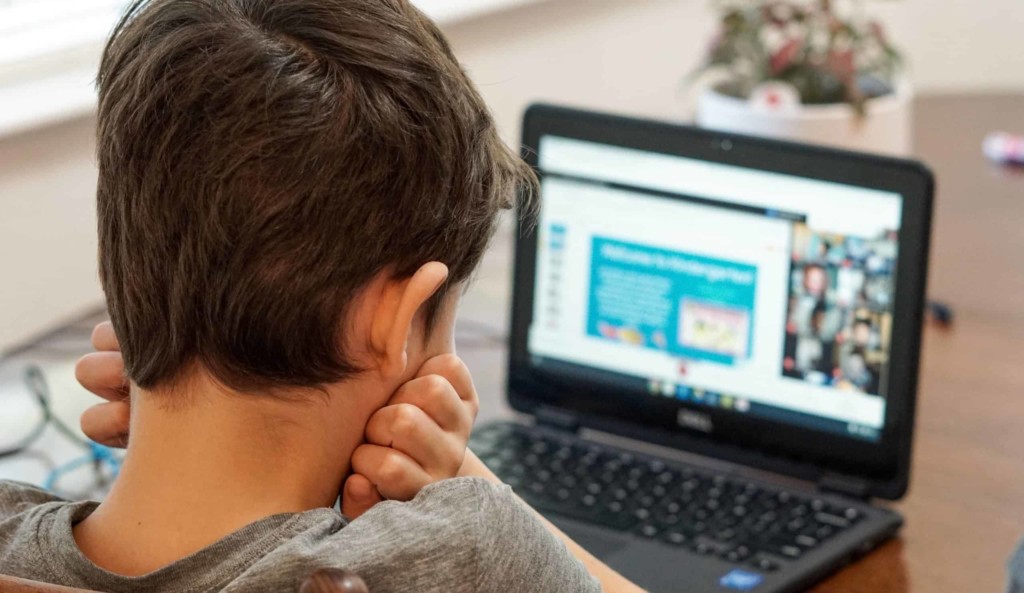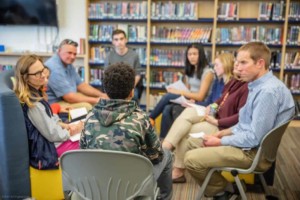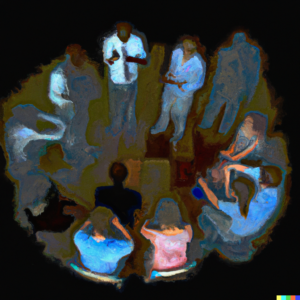Camera ON or Camera OFF? It’s a Complicated Question

In a face-to-face classroom, teachers rely on non-verbal cues: looks of confusion or clarity; the ability to sit with a student and read their body language; even the general mood or vibe of a class. All of these signals help educators to shift instruction, provide feedback, and meet the needs of their students. When classes pivoted online last spring, video conferencing platforms such as Zoom, GoogleMeet, and Microsoft Teams filled the physical void. In this new virtual environment, video cameras became the primary gateway for educators to see their students.
As the new school year starts across the country, email lists, social media, and even newspapers have featured conversations and questions around the use of cameras during video conferences: What if students do not turn on their cameras? Should there be a policy requiring their use or is it better to give students the option? What about privacy and equity?
This particular article does not intend to argue for or against the use of cameras and live video. Instead, the purpose is to present a multifaceted set of considerations. Because, as schools return this fall, the reaction may be to replicate face-to-face with live video. Some educators and leaders may associate the use of cameras with student engagement. Others may leverage live video to build a sense of community or facilitate group work. Even more, educators might feel that it is the only way to create a sense of “normalcy.” These are all valid assumptions, but not without the responsibility to address four critical considerations.
Consideration #1: Digital Access
A recent report from Common Sense Media found that 15-16 million students lack internet access sufficient enough to support remote learning, and nine million of those students also lack an adequate device. Although districts made immense progress over the summer, recent interviews conducted by the Center for Reinventing Public Education found that only 45% had plans to provide students with home WiFi, and 74% intended to give students a device.
Regardless, even if students have a device and access to the internet, they still may not have sufficient bandwidth to live-stream video. Since most video conferencing platforms include an option to turn off the camera or even dial in by phone, teachers will need to consider how to best serve and include all of their students.
Consideration #2: “Zoom Fatigue”
When the world first shifted predominantly online, both the business and education sectors began reporting “Zoom fatigue.” As explained by Professor Petriglieri to the BBC, video conferencing requires more attention and can lead to feelings of exhaustion. Given the array of faces, people put additional effort into interpreting non-verbal cues. Relatedly, individuals may also experience feelings of dissonance since they are mentally but not physically connected to those with whom they are interacting. Finally, because it is easier to multitask in a virtual setting, people may feel the mental strain from split focus and deteriorated productivity. Petriglieri also warns that people may experience feelings of loss as they see their friends or colleagues on-screen but cannot interact physically.
Video conferencing could also lead to a sense of discontinuity — an emotion that occurs when interacting with an individual in a disconnected space. During a normal school day, students sit in classrooms, move through halls, play outside, or chat with peers at lunch. They do not have those same interactions at home. In a remote setting, students might sit for hours at a screen, struggling to stay focused. Understanding this, teachers need to consider whether video is always the best option for learning given their students and context. They may explore audio-only sessions or text-based activities that occur in real-time such as co-editing a document while using some form of chat.
Consideration #3: The Psychological Effects of Being On Screen
Related to Zoom fatigue is the pressure of feeling as though everyone is looking at you on screen. A teacher on Twitter likened it to asking every student to stand in the front of the room for the entire class. Karen Costa, a faculty-developer and expert in trauma-informed instruction, has written about the psychological effects of requiring students to be on camera. Even if they cannot see themselves by hiding their own video, they might still experience trauma from constantly feeling seen.
Teachers interviewed recently as part of a qualitative study from the MIT Teaching Systems Lab commented that video platforms exacerbate many of the normal stressors associated with adolescence. Not only does it force students to stare at themselves when they may already be self-conscious, but it also intensifies the feeling of always being observed. One teacher noted that her students felt concerned about appearing less intelligent when on video and that virtual learning magnified many of her students’ math anxiety.
From a Universal Design for Learning perspective, a best practice would be to structure sessions to allow for student voice and choice. Instead of relying on video as the primary option for engaging in class, teachers might structure for audio, text-chat – both to the class and privately to the teacher, or via synchronous activities such as an interactive Nearpod or Classkick. On the positive, live video can help to foster a sense of community and create opportunities for students to engage in meaningful social learning. And yet, before requiring all students to be on camera, or publicly asking a student to turn on their video, teachers need to carefully consider the potential psychological implications as refusing to be on camera could be a symptom rather than a problem.
Consideration #4: Equity
Theoretically, when students come to school, they experience an equitable environment. They sit in the same desks in the same classrooms. They play on the same playground and eat lunch in the same cafeteria. However, once they go home, their environments may vary dramatically. Video can magnify social inequities and put them on display.
An April 2020 New York Times article illustrated this phenomenon when two college friends returned to two very different worlds: one spent the spring at her family’s second home while the other worked in her parents’ food truck. Consider the student working from a parked car to access WiFI or the older sibling caring for younger ones while attending class as compared to the classmate sitting in a well-appointed office. While virtual or blurred backgrounds offer a technical solution, what stigma might be attached to that decision if it is not built into the class culture? Similarly, turning off video can be an option, but does that also result in an unintended social consequence? These questions need to be considered, and teachers can factor them into their classroom norms.
There are no easy answers. Every school and classroom has its own unique context and culture, making a seemingly simple strategy — leveraging live video for synchronous classes — an incredibly complex and nuanced decision. As more schools begin the year remotely, or make the shift to online instruction, before immediately turning to video in an attempt to replicate in-person experiences, teachers and leaders should engage in conversations around these critical considerations.
For more, see:
- Building School and Classroom Community During Distance Learning
- Future Trend: Designing Schools for How Humans Learn
- Universal Design for Learning as a Framework for Digital Equity
Stay in-the-know with innovations in learning by signing up for the weekly Smart Update.








0 Comments
Leave a Comment
Your email address will not be published. All fields are required.